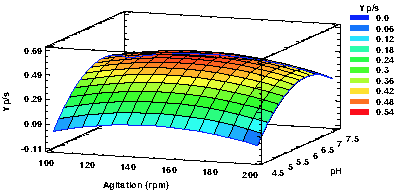 |
|
Acid hydrolysis from cladodes of Opuntia sp. var Atlixco was performed. The total reducing sugars released showed a linear relation to the concentration of phenolic compounds released, which can be a determining factor in fermentative processes. Wild microorganisms were isolated from the cladodes, three of which showed fermentative capacity using nopal hydrolysates. Molecular identification showed the presence of Candida intermedia, Saccharomyces cerevisiae and Zygosaccharomyces bailii; microorganisms that proved capable of producing ethanol. The results showed that pH is the principle factor that impacted ethanol production, and that when associated with conditions of oxygen limitation generated yields (Yp/s) of 48 % compared to the maximum theoretical value. Also, adding magnesium salt to the culture medium at a concentration of 0.5 g/L had the greatest effect on ethanol production for S. cerevisiae and Z. bailii. In other results, a slight reduction in product formation was observed for Z. bailii when (NH4)2SO4 was used as the nitrogen source, while for S. cerevisiae, ethanol production increased slightly, from 1.64 to 2.11 g/L when the hydrolized is used with 5 g/L of nitrogen salts. These results show that, in general, adding the nitrogen source did not promote product formation.
Keywords: Opuntia, carbohydrates, ethanol production, hydrolysate, wild yeasts.
|
|
 |

